Plans and Drawings of Old St Peters Rome
Saint Peter'south Basilica (Basilica Sancti Petri), begun 1506, completed 1626, Vatican Urban center
Architects and designers included: Donato Bramante (whose design won Julius 2's competition); Antonio da Sangallo, a pupil of Bramante (the Pauline Chapel); Fra Giocondo (strengthening of the foundation); Raphael and Fra Giocondo (whose redesigned edifice plan was non executed); Michelangelo (design of the dome, crossing, and exterior excluding the nave and facade); Giacomo della Porta (design of the cupola); Carlo Maderno (extension of Michelangelo's program, adding a nave and thou facade); Gian Lorenzo Bernini (add-on of the piazza, the Cathedra Petri, and the Baldacchino).

H.W. Brewer, Drawing of Old St. Peter'south Basilica as it appeared between 1475 and 1483, 1891
Pope Julius Two commissioned Bramante to build a new basilica—this involved demolishing the Erstwhile St Peter'southward Basilica that had been erected by Constantine in the fourth century. This aboriginal church building was in busted. But tearing it down was a bold maneuver that gives usa a sense of the enormous ambition of Pope Julius II, both for the papacy besides as for himself.

Numerous architects (see beneath), Saint Peter's Basilica, begun 1506 completed 1626 (Vatican City) (photo: Steven Zucker, CC Past-NC-SA two.0)
Burial site of St. Peter
The site is a very holy 1—information technology is (according to the Church building) the site of the burying of St. Peter. Bramante did the first plan for the new church building. He proposed an enormous centrally planned church building in the shape of a Greek cross enclosed within a square with an enormous dome over the heart, and smaller domes and half-domes radiating out. When Bramante died, Raphael took over as chief architect for St. Peter's, and when Raphael died, Michelangelo took over. Both Michelangelo and Raphael fabricated substantial changes to Bramante'south original plan. Still, the experience of being inside St. Peter's is awe-inspiring.

Bramante, plan for St. Peter's Basilica, 1506

Raphael, plan for St. Peter's Basilica, 1513

Michelangelo, programme for St. Peter'due south Basilica, 1547
Basilica and central programme
The two basic types of Church building are the basilica and the key program. The basilica, with its long centrality that focuses attention on the altar, has been the about popular type of church building plan considering of its practicality.

Numerous architects (see beneath), Nave, Saint Peter's Basilica, begun 1506 completed 1626 (Vatican Urban center)
The other popular blazon of church program is a central programme that is usually based either on the shape of a circle, or on a Greek cantankerous (a cross with equal arms). These are called central plans because the measurements are all equidistant from a middle. This type of Church building, influenced by Classical compages (think of the Pantheon), was very popular among High Renaissance architects. Besides the influence of ancient Roman compages, the circumvolve had spiritual associations. The circumvolve, which has no beginning and no end, symbolized the perfection and eternal nature of God. For some thinkers in antiquity and the Renaissance the universe itself was constructed in the class of concentric circles with the sunday, moon and stars moving in round orbits around the earth.
Bramante'south original pattern was for a cardinal plan, however—as built—the church combines elements of a primal plan with the longer nave of a basilica.
Architectural contributors to St. Peter's Basilica include:
Donato Bramante, whose design won Julius II'due south contest
Antonio da Sangallo, a educatee of Bramante, who designed the Pauline Chapel
Fra Giocondo, who strengthened the foundation
Raphael worked with Fra Giocondo, whose redesigned building plan was not executed
Michelangelo designed the dome, crossing, and outside excluding the nave and facade
Giacomo della Porta designed the cupola
Carlo Maderno, extended Michelangelo's programme adding a nave and one thousand facade
Gian Lorenzo Bernini added the piazza, the Cathedra Petri, and the Baldacchino
Additional resources:
Designing St. Peter'due south from Columbia University
Vatican tour of the necropolis believed to contain the tomb of Saint Peter – Please note: to reach the interactive tour of the necropolis, proceed beyond the introduction and the brief lecture offered by Primal Comastri
St. Peter'southward Basilica at Sacred Destinations
Google Satellite image
Smarthistory images for teaching and learning:
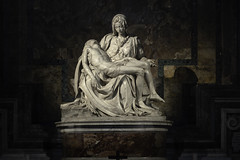
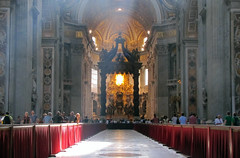
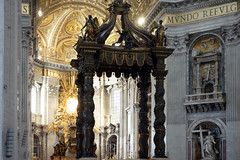
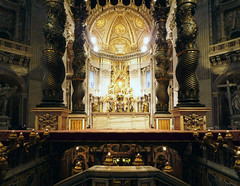
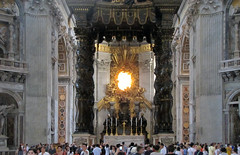
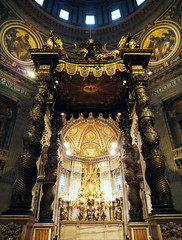
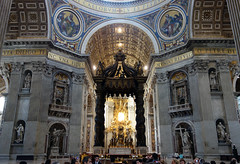

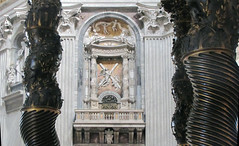
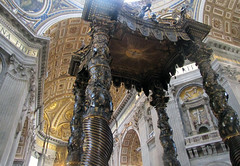
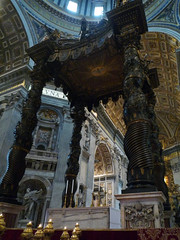
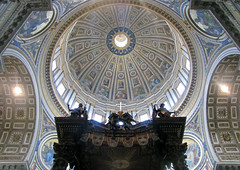
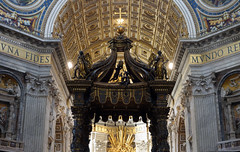
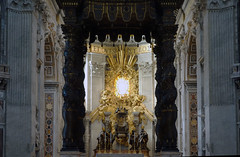
More Smarthistory images…
Cite this folio equally: Dr. Beth Harris and Dr. Steven Zucker, "Saint Peter's Basilica," in Smarthistory, August 9, 2015, accessed May 9, 2022, https://smarthistory.org/st-peters-basilica/.
Source: https://smarthistory.org/st-peters-basilica/
0 Response to "Plans and Drawings of Old St Peters Rome"
Enregistrer un commentaire